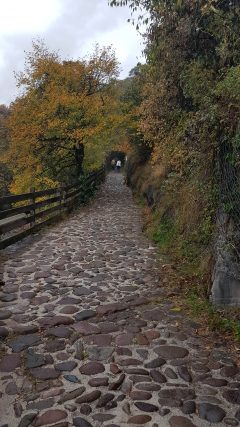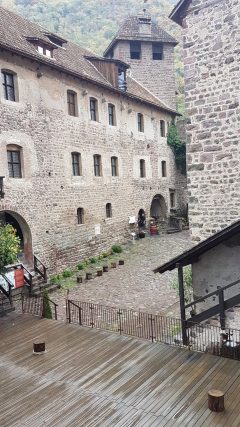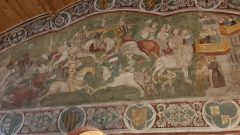There’s More To Italy Than Venice


A few weekends past, three of us enjoyed a side trip north to the Italian (but truly more Austrian) town of Bolzano. Situated in the Dolomite Alps, this town is an entirely unique blend of Italy, Austria and Germany. Its Tyrolean heritage is evident in its architecture, art, language and cuisine. Ever the scholars, we immediately sought out the town’s medieval castle, which houses the largest surviving collection of secular frescos. Slightly out of town, it clings to the side of a porphyry outcropping of a cliff. Built in 1381, Runkelstien (also known as Roncolo) castle is spectacularly preserved and its frescos, landscape and architecture were pure magic to a cosplay [costume and play] geek like myself. Standing on the battlements, overlooking the mountain vista, it was hard not to be transported back in time. These alps also yielded one of the most important archaeological/anthropological discoveries known—the mummy named “Otzi,” the iceman. Discovered by two hikers in 1991, the mummified remains and relics of a copper-age traveler from over 5,000 years ago has changed how historians interpret the copper age and its civilization. Bolzano has dedicated an entire, three-floor museum to the find, as well as to the knowledge that has been gleaned from it. This archaeological diversion was a well-earned respite from the overwhelming art that Venice is famous for.


The cuisine in Bolzano was an interesting mix of Italian and Germanic cooking. One could have pasta or spätzle, sauerkraut or marinara. We did not leave hungry, just exhausted and replenished, reminded of the vast and ancient geography of Italy and Europe and the freedom of open spaces with clean mountain air.
Submitted by Linda Steele.